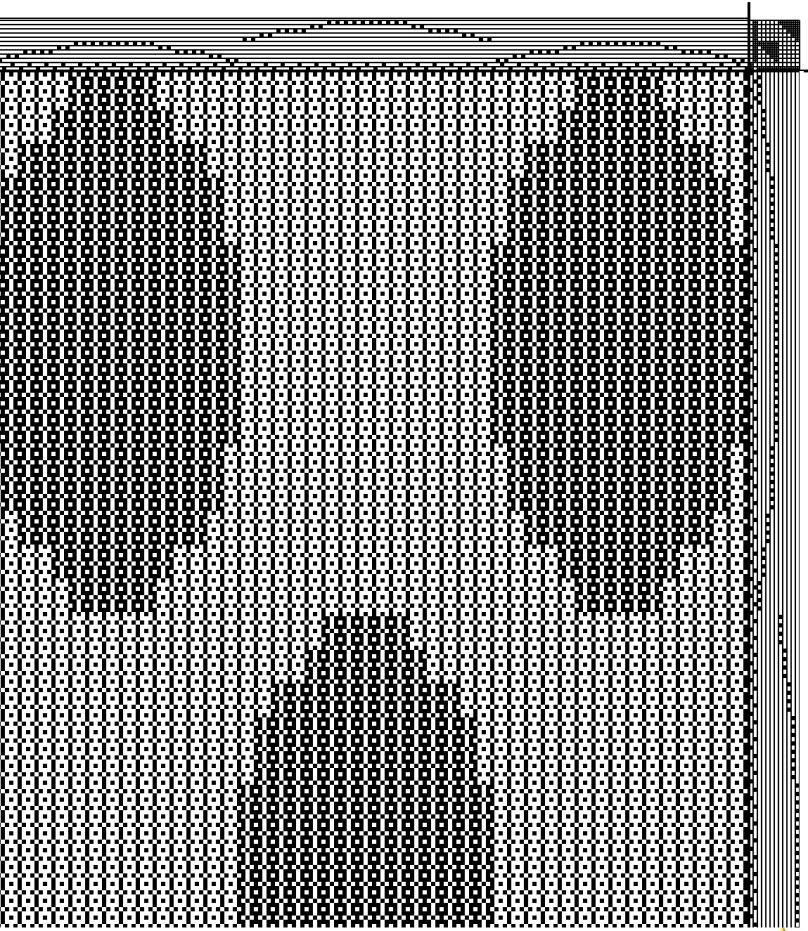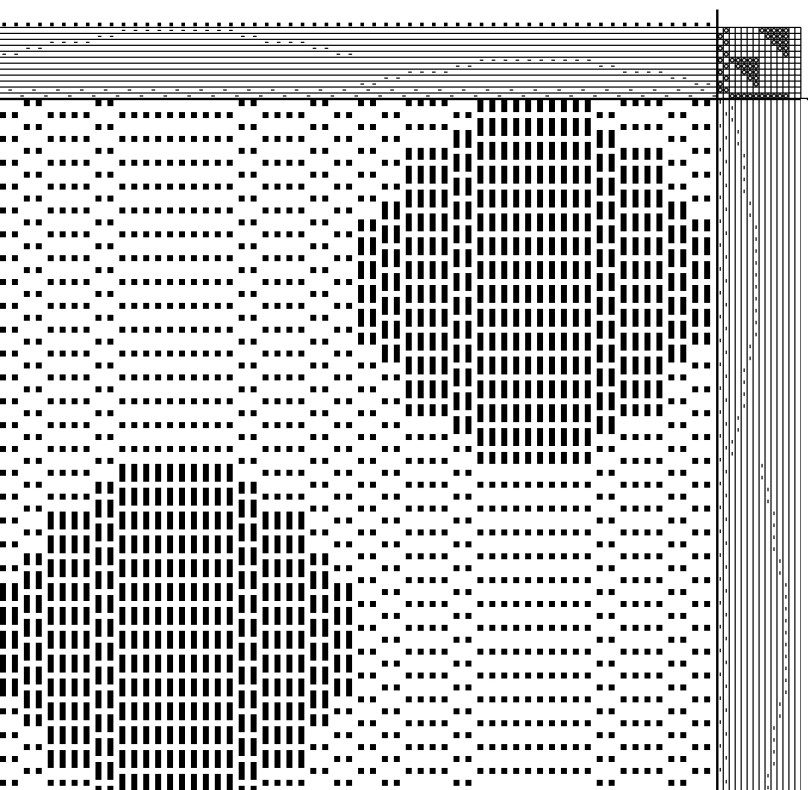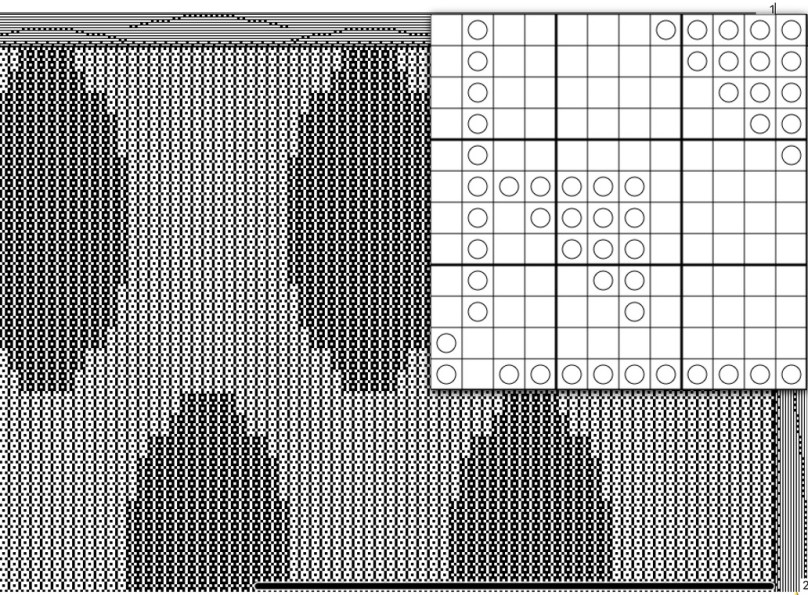These are Summer and Winter scarves that came off the Ashford loom recently. I used 12/2 tencel for warp and tabby weft, and 6/2 tencel for pattern weft. I like them a lot, and I really enjoyed weaving them, but I had issues. For one, weaving with two shuttles. Not a fan. For two, the drape is good, but I thought it could improve. Turned Summer and Winter could theoretically solve both those problems. Two shuttles to one shuttle. Horizontal floats becoming vertical floats.
This is the profile draft I used for this project:

Ten blocks when using Summer and Winter for block substitution becomes a 12 harness weave in classic Summer and Winter style. (Keep in mind that the ovals result in a graphic representation that includes tabbies and doesn’t account for thick and thin yarns in the weft. When weaving, I shortened up everything to achieve actual circles 🙂 .)

The weaving program will turn the draft for you, resulting in the following. I know this is very tiny so I’ll just tell you that when turned, the draft morphs to 22 harnesses. Too many for me! (Again adjustments to the treadling might have to be made, this time to lengthen the ovals.)

Not to be deterred, I did some research in my journals and magazines and found two articles that were really helpful. Nothing in my books though. Apparently turning Summer and Winter isn’t really a popular topic, though it really should be. Because…..
What if you could turn a design without actually rotating it? What if you could do it without needing more harnesses? What if you could improve drapability, not needing two weights of warp yarn (with the possible necessity of a second warp beam)? I found the answers to these questions in two articles, one in Weaver’s Issue 29 Fall 1995 by Ingrid Boesel, and one in Complex Weavers Journal number 72, May 2003 by Bonnie Inouye.
In her article “How to Start at the End of a Project and Work Backwards” Ingrid Boesel describes the evolution of a turned classic style Summer and Winter fabric woven on 16 harnesses. The crucial nugget that hooked me was that she used the same weight of yarn for ground and pattern in the warp. By alternating dark and light in the warp and using a twill (closer) sett she created the contrast needed for the pattern design. Boesel used a skeleton tie-up to keep the number of treadles in check. And, she used a different type of tabby.
Bonnie Inouye’s article in Complex Weavers Journal, titled “Turning Leaves”, describes how she developed a fabric for turned Dukagang style Summer and Winter. Her challenge was that she had a design for maple leaves that she wanted to weave in turned Summer and Winter, but if she turned the design the leaves would be oriented incorrectly. It took my quarantine-addled brain a goodly while to work through her process and finally come to understand it, and when I did I knew that drawing from Boesel and Inouye was exactly what I needed to make my “turned” Summer and Winter Circles without actually turning them. (Because, think about it, you don’t really need to turn a circle do you????)
So. I opted for Summer and Winter treadled Dukagang style in the block substitution program. Dukagang style uses one harness for the pattern in the tie-up, as opposed to Classic Summer and Winter which uses two.

I used my weaving program to turn the draft and this resulted (with some modifications):

The modifications being: Now the warp colors alternate light and dark. The weft color is also light. The number of harnesses is still the same. The pattern harness is still only number one. But, this is big: the tabbies are now what Inouye calls “pseudotabbies.” With these changes, the weft floats become warp floats. Drapability is improved. Only one shuttle will be needed.
Observe and compare:
Ingrid Boesel’s fabric also made use of “pseudotabbies” although she treadled it in classic Summer and Winter style, and interestingly, lengthened the floats for even more drape. I have produced the same results in classic S&W with a skeleton tie-up and pseudotabbies. So I can experiment with Dukagang or Classic. (Fist pump!) I will use 12/2 Tencel in both warp and weft, setting it at 30 ends per inch.
Right now my loom room is all in a jumble because we have to accommodate one of our cats in a kitty infirmary as she lives through the aftereffects of a radioactive iodine shot due to hyperthyroidism. Once she’s out of quarantine I will be experimenting with this new “Turned” Summer and Winter on my Ashford loom.
Say hi to Tippy.






